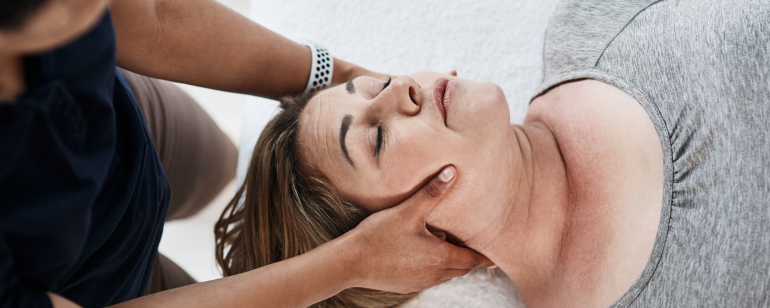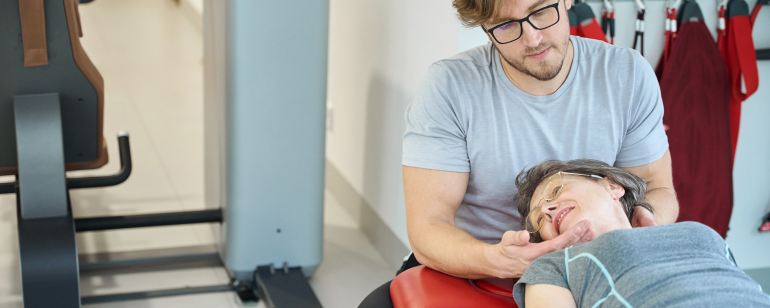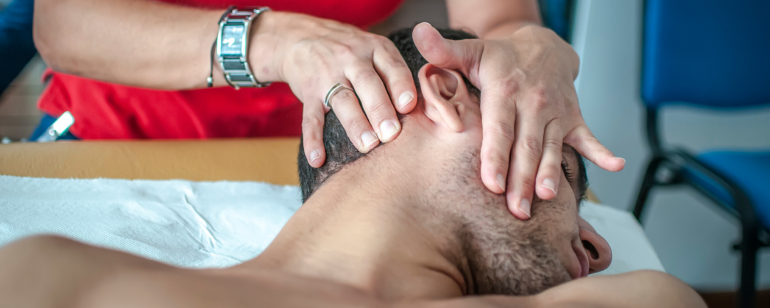Many patients come to our practice in Berlin-Mitte with tension in their neck, headaches or back pain. Often the cause lies where you wouldn’t expect it – in the jaw.
What happens when you grind your teeth
Teeth grinding – medically known as bruxism – usually occurs unconsciously, often at night. The jaw is under constant tension. This not only affects the chewing muscles, but also affects the neck, shoulders and back via muscle chains.
The chewing muscles are among the strongest muscle groups in the body. Constant pressure creates tension that spreads downwards. The result: incorrect posture, compensatory movements and overloading of other muscle groups.
CMD – a common, often unrecognized cause
Craniomandibular dysfunction (CMD) describes a disturbed interaction between the temporomandibular joint, muscles and surrounding structures. Typical symptoms:
- Jaw popping
- Tense neck
- Pressure in the head area
- Pain when chewing or speaking
- Back pain without a recognizable cause

Many sufferers initially consult dentists or orthopaedists. Only through interdisciplinary collaboration does it become clear that the symptoms are related to the jaw.
Why the jaw affects the back
The jaw is connected to the entire body via fascia and muscle chains. One-sided strain in the temporomandibular joint can lead to rotations of the cervical spine. This changes the posture of the head, affects the shoulder girdle and continues into the lumbar spine.
In practice, we often see the following correlations:
- Crunching → neck tension → compensated posture → back pain
- Malocclusion → Jaw misalignment → Shoulder problems
- Jaw clenching → tension in the diaphragm → reduced breathing depth
Diagnosis and treatment in physiotherapy
In our practice in Berlin-Mitte, we analyze the entire muscle and posture system. We examine:
- Tension of the masticatory muscles
- Mobility of the temporomandibular joint
- Position of head, shoulders and pelvis
- Breathing and diaphragmatic function
Depending on the findings, we use manual techniques, targeted mobilization and relaxing applications. The aim is to resolve muscular imbalances, relieve pressure on the temporomandibular joint and normalize body statics.
Cooperation with dentists
CMD is a multidisciplinary diagnosis. We work closely with dentists to treat the muscular component in addition to splint therapy. Physiotherapeutic measures can also significantly alleviate the symptoms of existing splints.

What you can do yourself
- Consciously relax your jaw regularly (place your tongue loosely against the roof of your mouth)
- Reduce stress, e.g. through breathing exercises or exercise
- Ergonomic workstation to relieve strain on the jaw and neck
- Heat in the neck area to relieve tension
Conclusion: The jaw is an underestimated factor in back pain
Teeth grinding does not only affect the oral cavity. The jaw can trigger complaints throughout the body via muscle chains and posture. At Physiotherapie Berlin Mitte Marsch, we take a holistic view of these connections. The aim is to identify the cause and treat it sustainably.
